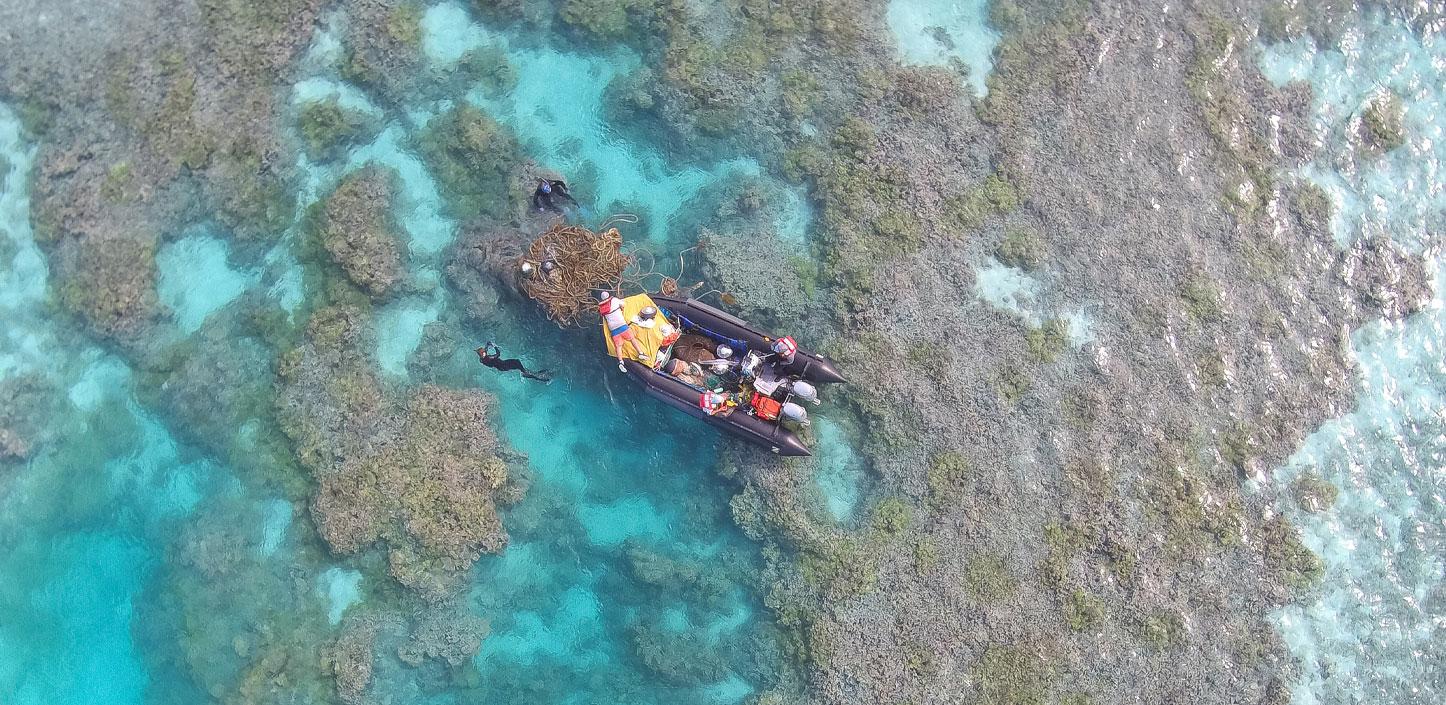
Papahānaumokuākea Research and Conservation Fund Announces $1 Million in Grants to Support Management and Conservation
Grants will support the largest marine national monument in the United States as it marks its 10th anniversary as a UNESCO World Heritage Site
WASHINGTON, D.C. (June 24, 2020) – The National Fish and Wildlife Foundation (NFWF) today announced that its Papahānaumokuākea Research and Conservation Fund has awarded more than $1 million in funding across six projects to support management and conservation of Papahānaumokuākea Marine National Monument.
This year marks the 10-year anniversary of Papahānaumokuākea’s designation as a UNESCO World Heritage site. Papahānaumokuākea is a remote archipelago of islands, reefs and atolls in the northwestern sector of the Hawaiian Island chain. Many of the thousands of species of fish and wildlife that inhabit this area are found nowhere else on Earth, including threatened and endangered species such as the Hawaiian monk seal, green sea turtle and Laysan albatross.
Papahānaumokuākea is also of great social significance with important Native Hawaiian and World War II cultural sites, making it the first mixed World Heritage site in the United States for both natural and cultural resources. The Papahānaumokuākea Research and Conservation Fund was established to increase the capacity to conserve and protect these important U.S. trust resources, with lead funding from the NOAA Office of Marine Sanctuaries.
“This slate of grants shows the breadth of the resources and the threats that managers are working to conserve and handle on a daily basis in a remote landscape,” said Jeff Trandahl, executive director and CEO of NFWF. “From addressing illegal fishing and albatross bycatch, to marine debris and the loss of haul-out habitat for monk seals and turtles, the challenges in the Monument are significant and varied, but the resources we are protecting are extraordinary.”
The islands, reefs and atolls that make up the 582,578 square miles of the Monument are located nearly at the center of the Pacific Ocean. Even at such distance, the Monument is under threat from human activities such as marine debris from around the Pacific Rim, as well as illegal and unreported fishing within its boundaries. These concerns are compounded by environmental stressors such as sea-level rise and bleaching events that affect the food sources, haul-out areas and breeding habitats of many of the threatened and endangered species that call Papahānaumokuākea home.
"By leveraging these funds we can continue the research and management work we need to protect Papahānaumokuākea, one of our most important natural resources," said U.S. Senator Brian Schatz (D-Hawaii), a member of the Senate Appropriations Committee. "This private and federal funding will help us better understand and conserve the monument and our ecosystem. I look forward to seeing the results of the research."
In this anniversary year, the grants announced today will help to address chronic management challenges and more recent events. In 2018, an outbreak of an invasive and smothering algal mat severely affected marine habitats at the northern end of the Monument, and Hurricane Walaka damaged areas at the southern end. Today’s grants will address both of these current management challenges while also progressing adaptation to management in a remote environment and helping to educate the public about the Monument, its unique assemblage of birds, fish, wildlife and habitats, and the work being done to protect it.
“It is through partnerships such as the one with the National Fish and Wildlife Foundation that we are able to leverage our limited resources to gain important new data and support critical research that guides us as managers of Papahānaumokuākea,” said Athline Clark, NOAA superintendent for PMNM. “The research and management initiatives funded by this partnership are a significant contribution to our management of this special and globally significant place.”
For more information about the individual grants awarded through the Papahānaumokuākea Research and Conservation Fund, click here.
The Papahānaumokuākea Research and Conservation Fund is part of NFWF’s broader Hawaii Conservation Program. For more information on these initiatives, please visit https://www.nfwf.org/programs/hawaii-conservation-program.
About the National Fish and Wildlife Foundation
Chartered by Congress in 1984, the National Fish and Wildlife Foundation (NFWF) protects and restores the nation’s fish, wildlife, plants and habitats. Working with federal, corporate and individual partners, NFWF has funded more than 5,000 organizations and generated a total conservation impact of $6.1 billion. Learn more at www.nfwf.org.
About the National Oceanic and Atmospheric Administration
NOAA’s mission is to understand and predict changes in the Earth's environment, from the depths of the ocean to the surface of the sun, and to conserve and manage our coastal and marine resources. Join us on Twitter, Facebook, Instagram and our other social media channels.
The Office of National Marine Sanctuaries serves as the trustee for a network of underwater parks encompassing more than 600,000 square miles of marine and Great Lakes waters from Washington state to the Florida Keys, and from Lake Huron to American Samoa. The network includes a system of 14 national marine sanctuaries and Papahānaumokuākea and Rose Atoll marine national monuments.
Papahānaumokuākea is cooperatively managed to ensure ecological integrity and achieve strong, long-term protection and perpetuation of Northwestern Hawaiian Island ecosystems, Native Hawaiian culture, and heritage resources for current and future generations. Four co-trustees - the Department of Commerce, Department of the Interior, State of Hawai‘i and the Office of Hawaiian Affairs - protect this special place. Papahānaumokuākea Marine National Monument was inscribed as the first mixed (natural and cultural) UNESCO World Heritage Site in the United States in July 2010. For more information, please visit www.papahanaumokuakea.gov.
###
Contact:
Rob Blumenthal, 202-857-0166, rob.blumenthal@nfwf.org